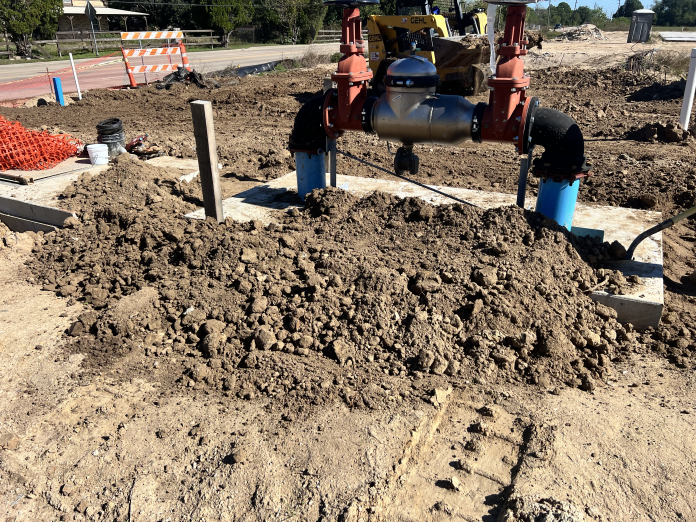A backflow prevention assembly consists of all components housed inside a precast concrete vault. The specific parts can differ based on the model, but the basic function remains the same. Each assembly is equipped with an inlet and an outlet. The inlet connects to a source with potentially unsafe water, and the outlet connects to the safe drinking water supply, which is typically found in a building. Water flows from the source through the inlet into the backflow assembly. Check valves are mechanical devices that permit water to flow in one direction and stop backflow in the reverse direction.
Certified backflow prevention systems have a double check valve assembly. Check valves are mechanical devices that use springs or pressure sensors and close when the water flow reverses. During standard operation, these valves stay open to let water flow freely. If water flow reverses and backflow might occur, the check valve will shut. This initial closure prevents water from flowing back. A single check valve is not a certified backflow prevention system and is rarely used anymore to maintain cross-connection safety.
Backflow prevention assemblies often include test cocks or ports for regular testing and upkeep. The operation of the check valves can be assessed to verify they are functioning correctly and sealing tightly to avoid backflow.
Backflow prevention assemblies play a key role in safeguarding drinking and municipal water supplies by preventing any possible cross-contamination.
Municipal Water Systems
Municipal water distribution networks must be safeguarded against possible contamination from cross-connections with industrial or agricultural water sources.
Residential and Commercial Buildings
Residential and commercial properties must protect their drinking water supply while allowing a connection to the fire department’s water system.
Hospitals and Healthcare Facilities
Crucial for protecting the drinking water supply, backflow assemblies are essential in hospitals, medical facilities, and laboratories that have medical gas and water treatment systems.
Irrigation Systems
Backflow assemblies are frequently used in irrigation systems to stop non-potable water from flowing back into the main water supply.
Fire Protection Systems
Backflow prevention assemblies are commonly found in fire sprinkler systems to prevent backflow and maintain the integrity of the water supply used for fire protection.
Industrial Facilities
Industrial environments depend on backflow preventers to shield against possible contamination from processes, chemicals, or machines that could endanger the public water supply.
Water Features and Fountains
At locations with ornamental or recreational water features, backflow prevention assemblies are usually necessary to keep stagnant or treated water from entering the municipal water supply.
Food Service Establishments
Restaurants, cafes, and other food service businesses utilize backflow preventers to meet health and safety regulations.


